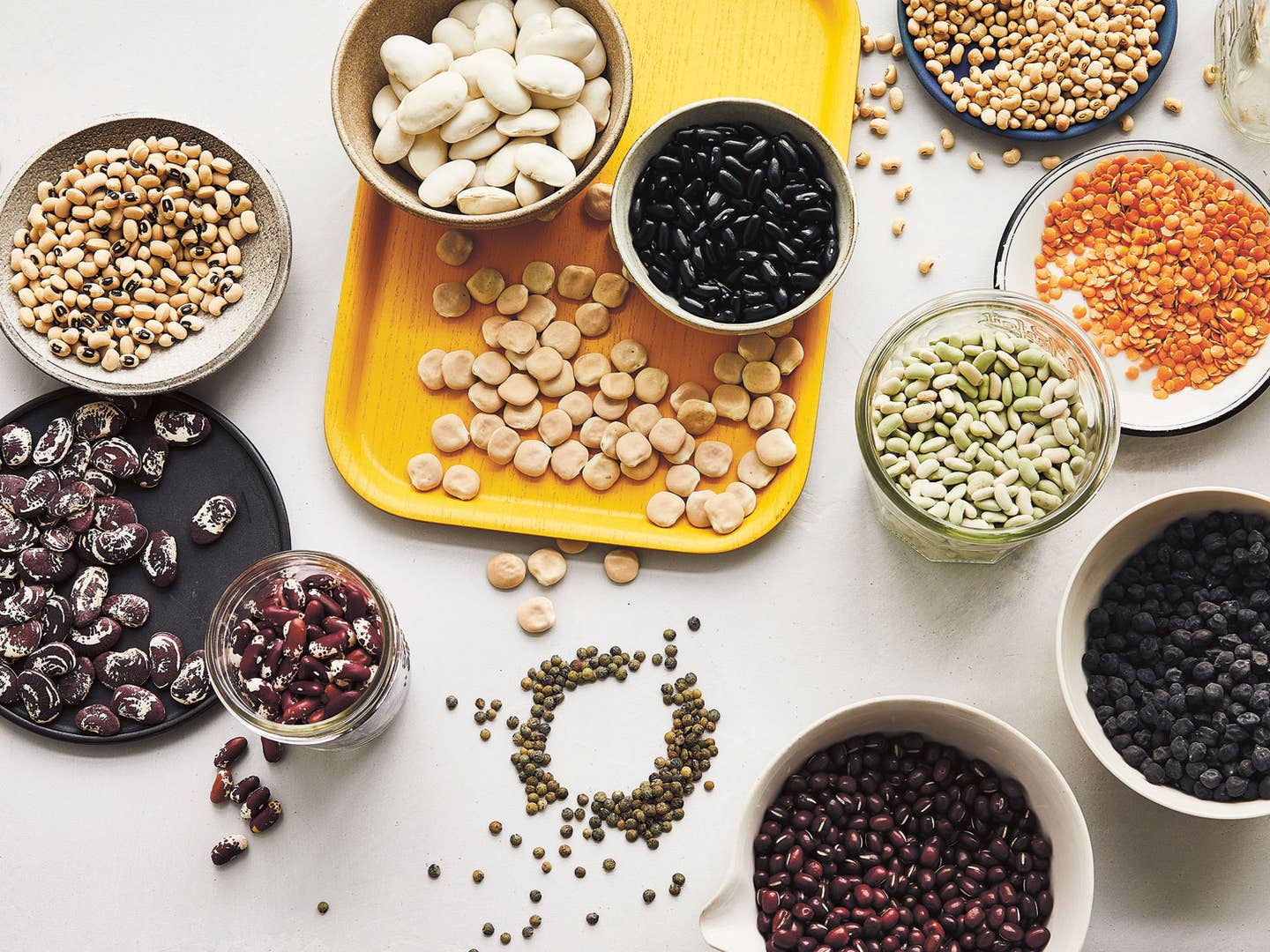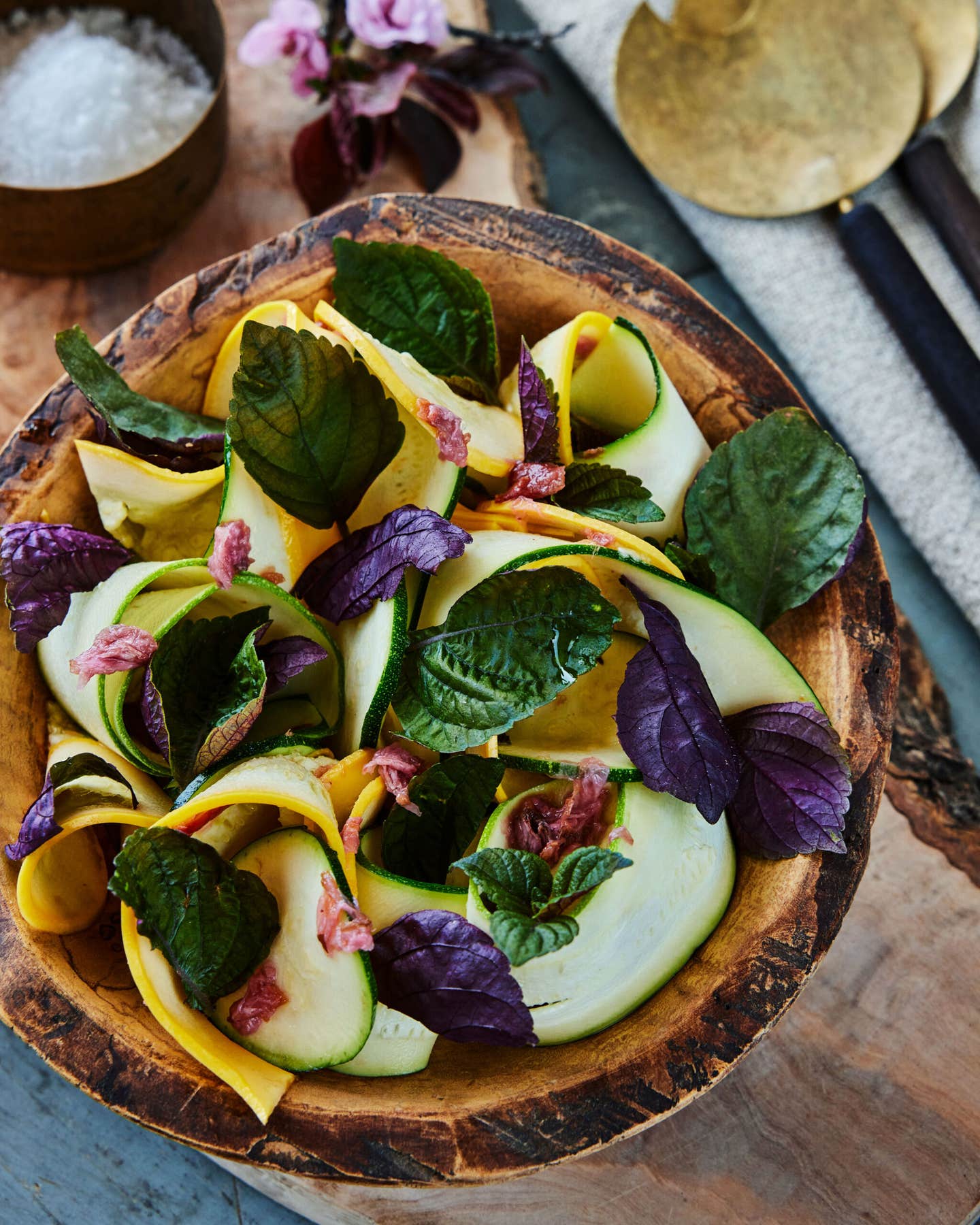
Bean Eaters Unite! “Cool Beans” Author Joe Yonan on Why He Loves Legumes
This book of entirely plant-based recipes opens the door to a world of possibilities with beans.
I love beans of all varieties. When put that way, it doesn’t sound very exciting. But in Italian—cannellini, ceci, borlotti, lenticchie—their lovely names hint at intriguing possibilities. I’d already been a vegetarian for years when I moved to Florence in 1984, and I quickly took to the ways of the mangiafagioli, or “bean eaters,” as the people of Tuscany are called. The hearty, protein-rich staple was first introduced from the New World as a gift to the Medici Pope in the 13th century, and beans have been the backbone of cucina povera, or the peasant cooking of rural Italy, ever since.
A pastry chef by training, I eventually married an Italian, then settled in and began teaching farm-to-table cooking classes in Florence. I first met Joe Yonan, who’s held the position of food and dining editor at The Washington Post for the past fourteen years, at the International Association of Culinary Professionals conference in New York City in 2018. He shared with me that he was working on a cookbook of bean recipes, and we bonded immediately over our mutual appreciation of the sometimes-unsung world of legumes.
Cool Beans: The Ultimate Guide to the World’s Most Versatile Plant-Based Protein, with 125 Recipes, out this month, is Yonan’s third cookbook. (He is the editor of a fourth, America the Great Cookbook, published in 2017.) Drawing on his many years of relationships with chefs, other cookbook authors, and even food bloggers, Yonan puts his own spin on a wide range of innovative and interesting recipes collected throughout his career. Black bean falafel burgers; cannellini cannelloni; and chocolate, red bean, and rose brownies all make an appearance. My own version of penne with the delicately-flavored Tuscan cicerchia bean is also included. With each one, this long-time food writer’s passion for a meatless diet is evident. We spoke with Yonan about his recently published ode to beans.
JWF: When did you first become a vegetarian?
JY: In my forties, I was doing a lot of dining in restaurants as part of my job, so I began trying to counteract that by eating really lean and clean at home. I realized that I was feeling better and I had more energy. I started putting the pieces together and then just kept going down that road. I didn’t tell myself, “As of today, I’ll never eat another piece of meat again.” I simply began eating more and more vegetables. Simultaneously, it was getting easier to do that in restaurants, as there were more creative foods available. Eventually, I realized, “Oh, I’m actually a vegetarian!” I think I came out as a vegetarian officially in 2012.
JWF: Is that why you decided to make the recipes in this book completely plant-based?
JY: I wanted to prove to people that a bean’s natural partner doesn’t always have to be a smoky piece of pork. There’s nothing wrong with putting a bit of pork in your beans if that’s what you want. It’s delicious—but I wanted to remind people that beans don’t need that. They are delicious on their own.
JWF: What would you suggest for someone who is trying to transition completely to plant-based protein?
JY: I think the key, if you're trying to get people to eat more plant-based cooking, is to go for familiarity—recipes that won’t be intimidating or confusing. Everyone has a variety of beans that they already know and love—chickpeas, pintos, black beans, cannellini. Depending on what part of the world you're from, certain beans are traditional for you. Look for dishes that use those, make them using my suggestions, and just see what you think of them.
Realizing that things can be delicious without much else is also key. When you start with dried beans, you cook them and get that full liquid gold from the broth. I think that's a revelation to people. They don't realize how delicious that liquid can be. To me, bean broth rivals chicken broth in its rich flavor.
JWF: Do you have a preference for dried beans versus canned beans?
JY: I'm very glad that you brought that up. Canned beans and jarred beans are a fantastic, convenient product, right up there with canned tomatoes. I always have these in my pantry. These pre-cooked legumes also provide the unseasoned aquafaba, or viscous liquid that is included in the can, which can be used in place of eggs in many vegan recipes. (I call for aquafaba in several of the recipes in the book.) You just can’t create that stuff when you cook the beans at home. It only comes from a can.
JWF: What type of pot do you prefer to use when cooking dried beans?
JY: Beans are very hands-off cooking. It depends on what my day looks like. If it’s a weekend and I’m puttering around the house, I’ll just bake them slowly in a Dutch oven. If I’m in a rush, I’ll make them in the InstaPot, then take the top off and cook the liquid down. I also have a tall clay pot for cooking beans that uses less water, so the broth is more concentrated—and the alkaline of the clay counteracts any acidity in the food.
JWF: Tell us about the Japanese technique of cooking beans with Kombu.
JY: Kombu has the same enzyme that we lack for digesting the oligosaccharides in beans. These are the sugars that produce gas in our digestive systems. Kombu also adds a little umami and saltiness, though it’s pretty subtle.
JWF: In the book, you mention brining as a technique used by America’s Test Kitchen, and by Harold McGee. Do you always brine your beans?
JY: Brining helps to soften the skins of the tougher, older beans. I usually don’t presoak, but if I’m unsure of how old they are, I will, using a salt water brine. The salt just helps to soften the beans a little faster.
JWF: You were raised in Texas, where chili is mostly meat, no beans. Your recipe for Texas Style Bowl O’ Red is all beans. Please explain. Will they revoke your Texas birth certificate?
JY: Yes, well, I am from Texas—a former certified barbecue judge, in fact. In Texas, there’s such a purist attitude when it comes to chili. I used to be one of those people screaming “Real chili doesn’t have beans!”
I think that when you give up meat and adopt plant-based eating, however, you also have to give up that strict approach. You want to have respect for the origin of dishes and not completely bastardize them; that said, once you know the rules, you can break them.
Keep Reading
Continue to Next Story










